-
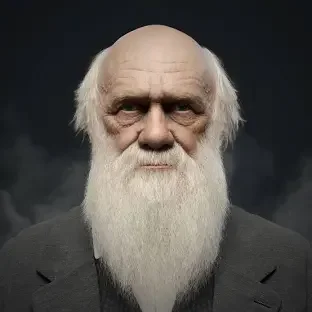 he publication of Charles Darwin’s groundbreaking work, On the Origin of Species, introduced the theory of evolution by natural selection. Darwin proposed that species evolve over time through the survival and reproduction of organisms with advantageous traits. This theory revolutionized biology, challenging the prevailing view of divine creation and setting the stage for modern evolutionary science. Darwin, Charles. "On the Origin of Species. John Murray, 1859
he publication of Charles Darwin’s groundbreaking work, On the Origin of Species, introduced the theory of evolution by natural selection. Darwin proposed that species evolve over time through the survival and reproduction of organisms with advantageous traits. This theory revolutionized biology, challenging the prevailing view of divine creation and setting the stage for modern evolutionary science. Darwin, Charles. "On the Origin of Species. John Murray, 1859 -
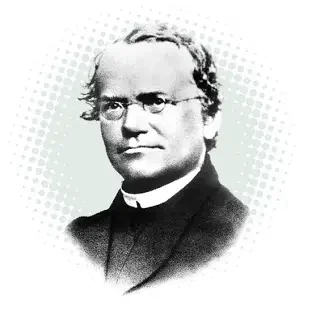 Gregor Mendel, through his work on pea plants, discovered the fundamental laws of heredity, which would later play a crucial role in understanding the mechanisms of evolution. Mendel’s experiments showed how traits are inherited through discrete units, or genes, laying the foundation for modern genetics. However, his work was largely overlooked until the early 20th century. "Mendel, Gregor. “Experiments on Plant Hybridization.” Proceedings of the Natural History Society of Brünn, 1865."
Gregor Mendel, through his work on pea plants, discovered the fundamental laws of heredity, which would later play a crucial role in understanding the mechanisms of evolution. Mendel’s experiments showed how traits are inherited through discrete units, or genes, laying the foundation for modern genetics. However, his work was largely overlooked until the early 20th century. "Mendel, Gregor. “Experiments on Plant Hybridization.” Proceedings of the Natural History Society of Brünn, 1865." -
 In the early 1900s, scientists such as Hugo de Vries, Carl Correns, and Erich von Tschermak independently rediscovered Mendel’s laws, which sparked the development of genetics. This revelation provided the missing link between Darwin’s theory of evolution and the mechanisms behind inheritance. "de Vries, Hugo, et al. “The Mutation Theory.” The American Naturalist, vol. 38, no. 434, 1904, pp. 317-344."
In the early 1900s, scientists such as Hugo de Vries, Carl Correns, and Erich von Tschermak independently rediscovered Mendel’s laws, which sparked the development of genetics. This revelation provided the missing link between Darwin’s theory of evolution and the mechanisms behind inheritance. "de Vries, Hugo, et al. “The Mutation Theory.” The American Naturalist, vol. 38, no. 434, 1904, pp. 317-344." -
 In 1953, James Watson and Francis Crick discovered the double-helix structure of DNA, revealing how genetic information is stored and passed on. This discovery provided molecular evidence for the processes of inheritance, supporting the modern understanding of evolution at the genetic level and connecting the theory of natural selection with molecular biology."Watson, James D., and Francis H. Crick. “Molecular Structure of Nucleic Acids.” Nature, vol. 171, no. 4356, 1953, pp. 737-738."
In 1953, James Watson and Francis Crick discovered the double-helix structure of DNA, revealing how genetic information is stored and passed on. This discovery provided molecular evidence for the processes of inheritance, supporting the modern understanding of evolution at the genetic level and connecting the theory of natural selection with molecular biology."Watson, James D., and Francis H. Crick. “Molecular Structure of Nucleic Acids.” Nature, vol. 171, no. 4356, 1953, pp. 737-738." -
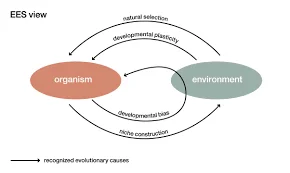 The Modern Synthesis emerged in the 1930s and 1940s, combining Darwin’s theory of natural selection with Mendelian genetics. Key scientists, including J.B.S. Haldane, Ronald Fisher, and Sewall Wright, integrated population genetics, paleontology, and evolutionary theory. This synthesis clarified how evolution works on a genetic level and solidified the foundation of evolutionary biology. "Mayr, Ernst. The Growth of Biological Thought: Diversity, Evolution, and Inheritance. Belknap Press, 1982."
The Modern Synthesis emerged in the 1930s and 1940s, combining Darwin’s theory of natural selection with Mendelian genetics. Key scientists, including J.B.S. Haldane, Ronald Fisher, and Sewall Wright, integrated population genetics, paleontology, and evolutionary theory. This synthesis clarified how evolution works on a genetic level and solidified the foundation of evolutionary biology. "Mayr, Ernst. The Growth of Biological Thought: Diversity, Evolution, and Inheritance. Belknap Press, 1982." -
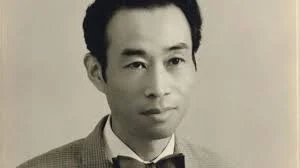 Motoo Kimura introduced the Neutral Theory of Molecular Evolution, proposing that most evolutionary changes at the molecular level are due to genetic drift rather than natural selection. This theory was pivotal in understanding the molecular evolution of species, complementing the broader framework of Darwinian evolution. "Kimura, Motoo. The Neutral Theory of Molecular Evolution. Cambridge UP, 1983."
Motoo Kimura introduced the Neutral Theory of Molecular Evolution, proposing that most evolutionary changes at the molecular level are due to genetic drift rather than natural selection. This theory was pivotal in understanding the molecular evolution of species, complementing the broader framework of Darwinian evolution. "Kimura, Motoo. The Neutral Theory of Molecular Evolution. Cambridge UP, 1983." -
 Molecular phylogenetics emerged as a new tool for understanding evolutionary relationships. By comparing genetic sequences, scientists could build phylogenetic trees that traced organisms' evolutionary histories. This method reinforced the concept of common ancestry and provided concrete evidence for the branching patterns of evolution."Fitch, Walter M. “Toward Defining the Course of Evolution: Minimum Change for a Specific Tree Topology.” Systematic Biology, vol. 20, no. 4, 1971, pp. 406-416."
Molecular phylogenetics emerged as a new tool for understanding evolutionary relationships. By comparing genetic sequences, scientists could build phylogenetic trees that traced organisms' evolutionary histories. This method reinforced the concept of common ancestry and provided concrete evidence for the branching patterns of evolution."Fitch, Walter M. “Toward Defining the Course of Evolution: Minimum Change for a Specific Tree Topology.” Systematic Biology, vol. 20, no. 4, 1971, pp. 406-416." -
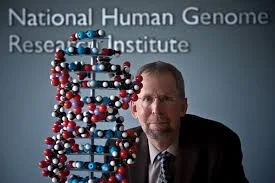 The completion of the Human Genome Project in 2001, which mapped the entire human genome, provided extensive data on the genetic similarities between humans and other species. This project reinforced the idea of common ancestry and evolution, demonstrating that humans share a significant amount of their DNA with other primates and species. "The Sequence of the Human Genome.” Nature, vol. 409, no. 6822, 2001, pp. 860-921."
The completion of the Human Genome Project in 2001, which mapped the entire human genome, provided extensive data on the genetic similarities between humans and other species. This project reinforced the idea of common ancestry and evolution, demonstrating that humans share a significant amount of their DNA with other primates and species. "The Sequence of the Human Genome.” Nature, vol. 409, no. 6822, 2001, pp. 860-921." -
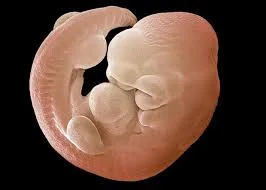 Evolutionary developmental biology (Evo-Devo) emerged in the 1980s, focusing on how genetic regulation during development influences evolutionary changes. The discovery of key developmental genes, such as Hox genes, illustrated how small genetic changes can have profound effects on the development of organisms and evolutionary pathways. "Carroll, Sean B. Endless Forms Most Beautiful: The New Science of Evo Devo. Norton Company, 2005."
Evolutionary developmental biology (Evo-Devo) emerged in the 1980s, focusing on how genetic regulation during development influences evolutionary changes. The discovery of key developmental genes, such as Hox genes, illustrated how small genetic changes can have profound effects on the development of organisms and evolutionary pathways. "Carroll, Sean B. Endless Forms Most Beautiful: The New Science of Evo Devo. Norton Company, 2005." -
 The advent of CRISPR-Cas9 gene-editing technology in 2012 has dramatically advanced genetic research, offering the potential to edit DNA with unprecedented precision. CRISPR has the potential to change how we study evolution by allowing scientists to directly manipulate genes and observe evolutionary outcomes in real-time."Doudna, Jennifer A., and Emmanuelle Charpentier. “The New Frontier of Genome Engineering with CRISPR-Cas9.” Science, vol. 346, no. 6213, 2014, pp. 1258096."
The advent of CRISPR-Cas9 gene-editing technology in 2012 has dramatically advanced genetic research, offering the potential to edit DNA with unprecedented precision. CRISPR has the potential to change how we study evolution by allowing scientists to directly manipulate genes and observe evolutionary outcomes in real-time."Doudna, Jennifer A., and Emmanuelle Charpentier. “The New Frontier of Genome Engineering with CRISPR-Cas9.” Science, vol. 346, no. 6213, 2014, pp. 1258096."